SUNDAY 2 - An Artist of Intimate Intent: James Benning
Programmed by: Joshua Wagner and Olivia Hunter Willke
James Benning is a sculptor of time as much as an observer of nature. The work of a former high school math teacher preoccupied with history, his films form their own structures and disclose their own histories. A minimalist filmmaker, Benning conducts quiet experiments without a crew and engages with different formal and avant-garde qualities with his electric Bolex. Most famous for static shots of landscapes, he is preoccupied with how light interacts with and informs environment. Both staged tableaus and naturally occurring movement pepper Benning's frames. An artist of intimate intent, he weaves layers of environment, text, and sound, slowly revealing themes, stories, or removing narrative altogether. He is a filmmaker who is hard to pinpoint, as he is almost constantly reaching outside of any definitions of his work that could confine him or reduce him to mere repetition.
One might assume that Benning's films, still and static, would be cold, but Benning simply removes manipulation, leaving the warmth of his ambition and meditation. What is left in that warmth is room for viewers to wander through his spaces, think their own thoughts, feel their own feelings. This series, inspired by Erika Balsom’s deep-dive into Ten Skies, offers the Doc premiere retrospective of one of avant-garde film's most eclectic and eternal artists as intended, on 16mm film.
Landscape Suicide (1986)
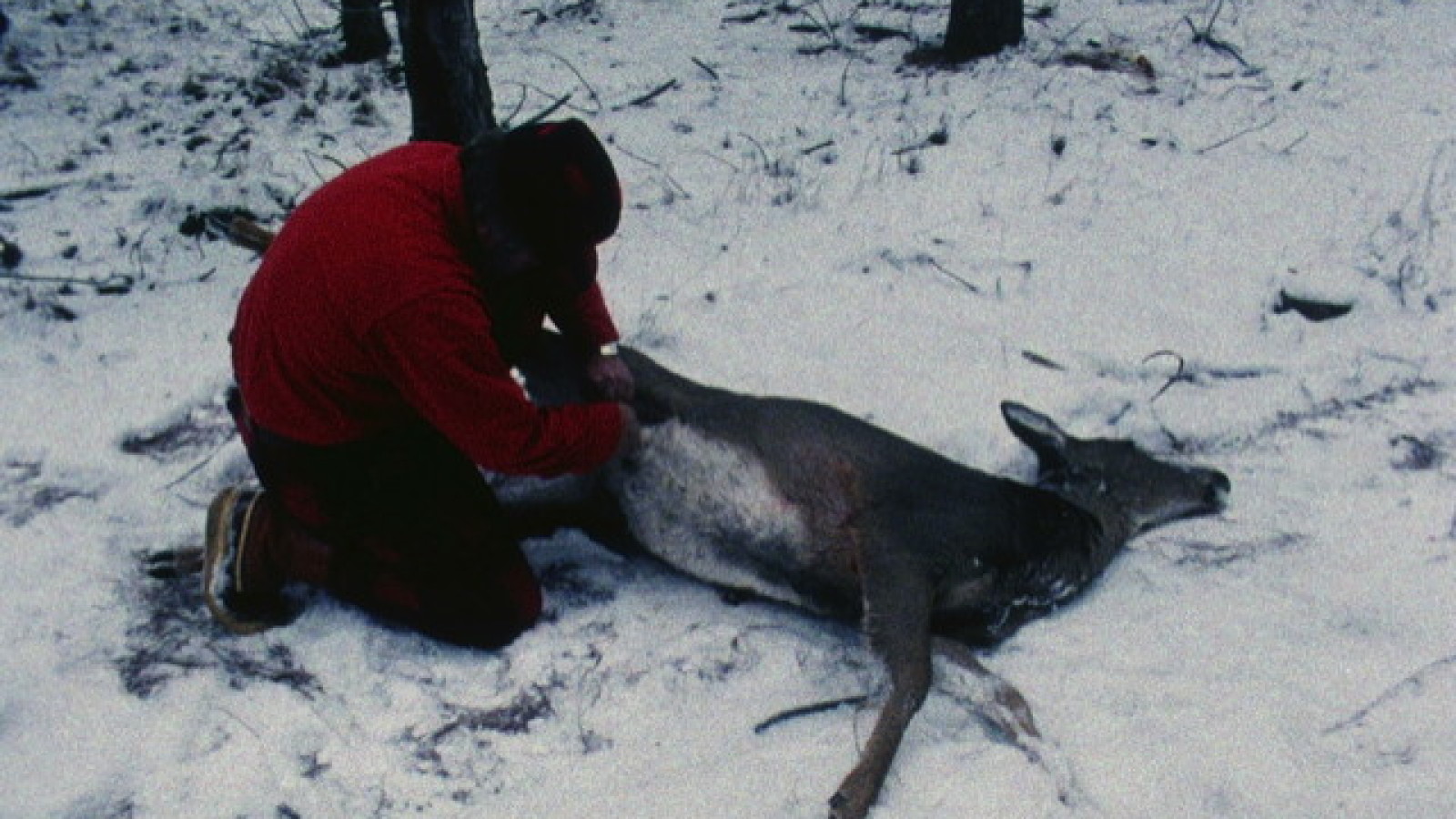
James Benning · 95m · 16mm
Landscape Suicide gazes upon the snow-covered banks and manicured suburban streets of American murder. The quiet mundanity of hostility situated in everyday expanses is examined through stationary landscape, voice-over, and reenactments of the cross-examinations of 1950s serial killer Ed Gein of Wisconsin and California teenager Bernadette Protti, who stabbed a friend to death in 1984.
Sunday, March 24th 8:00PM
Deseret (1996)
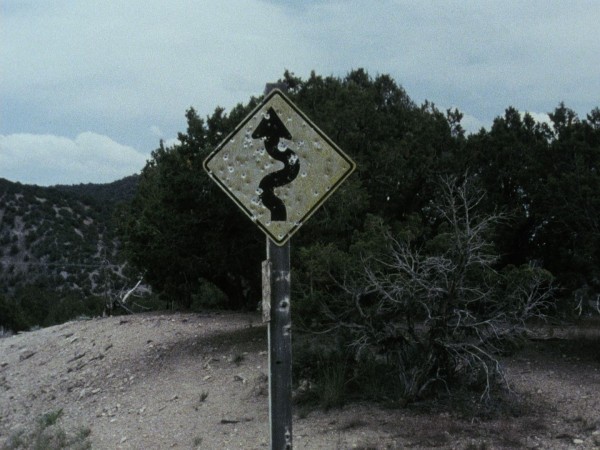
James Benning · 82m · 16mm
Surveillance through journalistic anecdotes. Benning layers 93 New York Times stories about Utah – its violences and Mormonism – with static shots of the state’s petroglyphs, ruins, and sediment. Each sentence is a new location to lose oneself in. Fonts, hues, and terrors slowly shift over time as the curation of image and story spins together and departs.
Sunday, March 31st 8:00PM
El Valley Centro (1999)
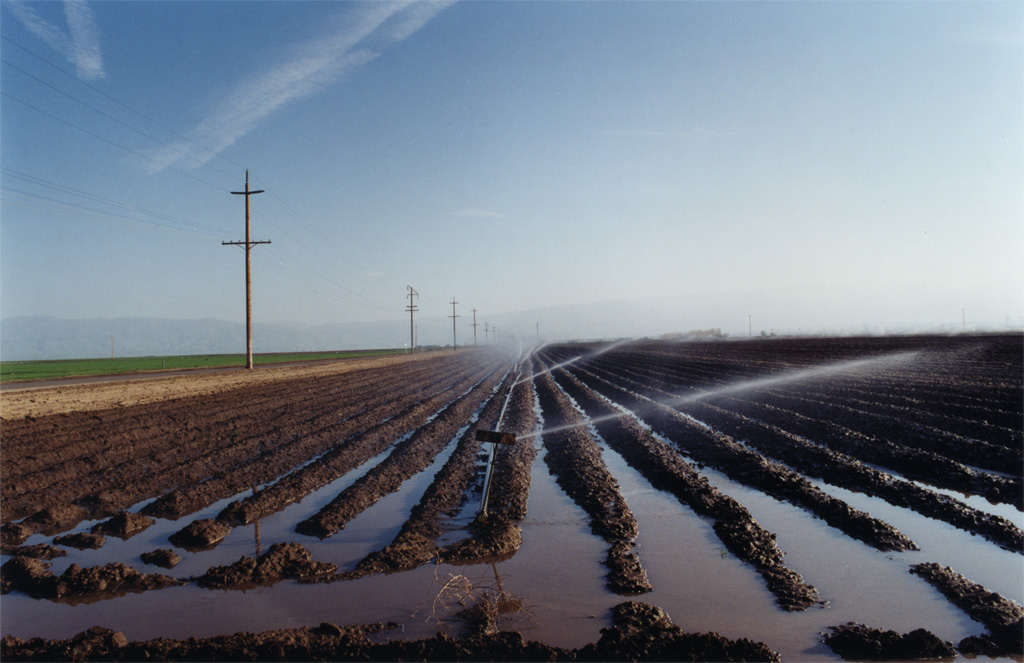
James Benning · 90m · 16mm
The genesis of Benning’s California Trilogy (35 shots of 150 seconds), El Valley Centro offers a clipped view of the middle of the state, neither defined by North nor South. Oil rig fires, crop dusting planes, and grape pickings populate the desert landscape, obscured and laid to rest on film. Whether by sheer luck or precise planning, the film’s static shots shimmer under their celluloid surfaces.
Sunday, April 7th 8:00PM
Los (2001)
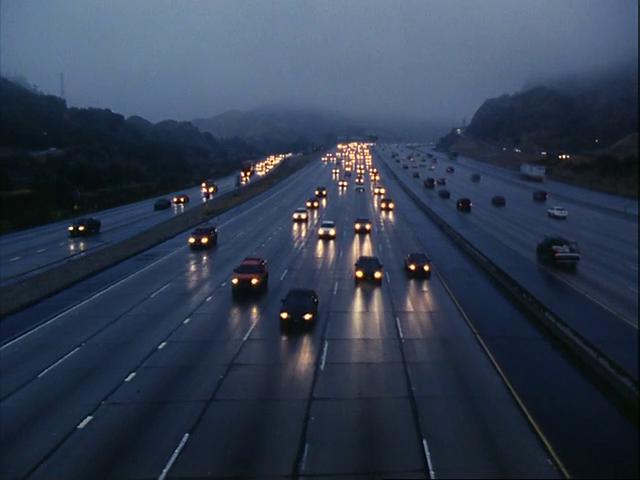
James Benning · 90m · 16mm
Moving southwards, Benning documents an L.A. that viewers “realize they don’t really know at all.” On-location sound matches static shots of highways, garbage disposal plants, prisons, beach joggers, and cemeteries. The tension between the ephemeral and the camera lens equivocates the struggle for breath in the cityscape, moving towards life as much as towards its own death.
Sunday, April 14th 8:00PM
Sogobi (2002)
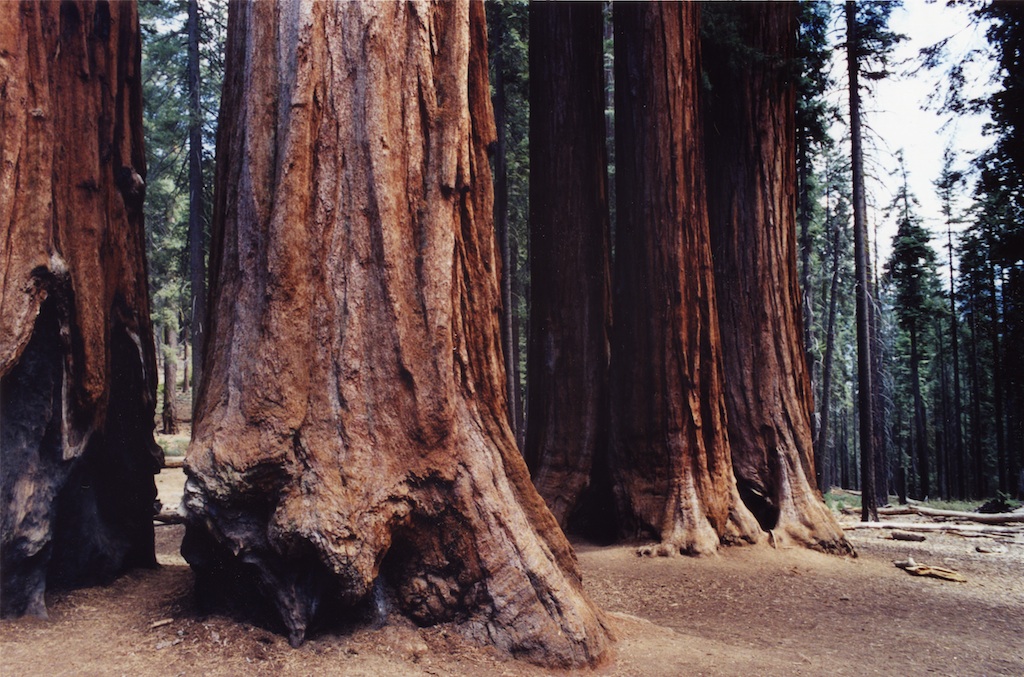
James Benning · 90m · 16mm
Subtle camera movements return in this final installment of Benning’s static shot California Trilogy. With a shoe-string budget, Benning turns towards the wilderness (“sogobi”), doing his best to isolate himself outside of human beings, centers, and effects – though a fire helicopter does sneak in “kind of like God, dipping down.” If Time Out is to be trusted, this film is “for completionists only.”
Sunday, April 21st 8:00PM
11 x 14 (1977)
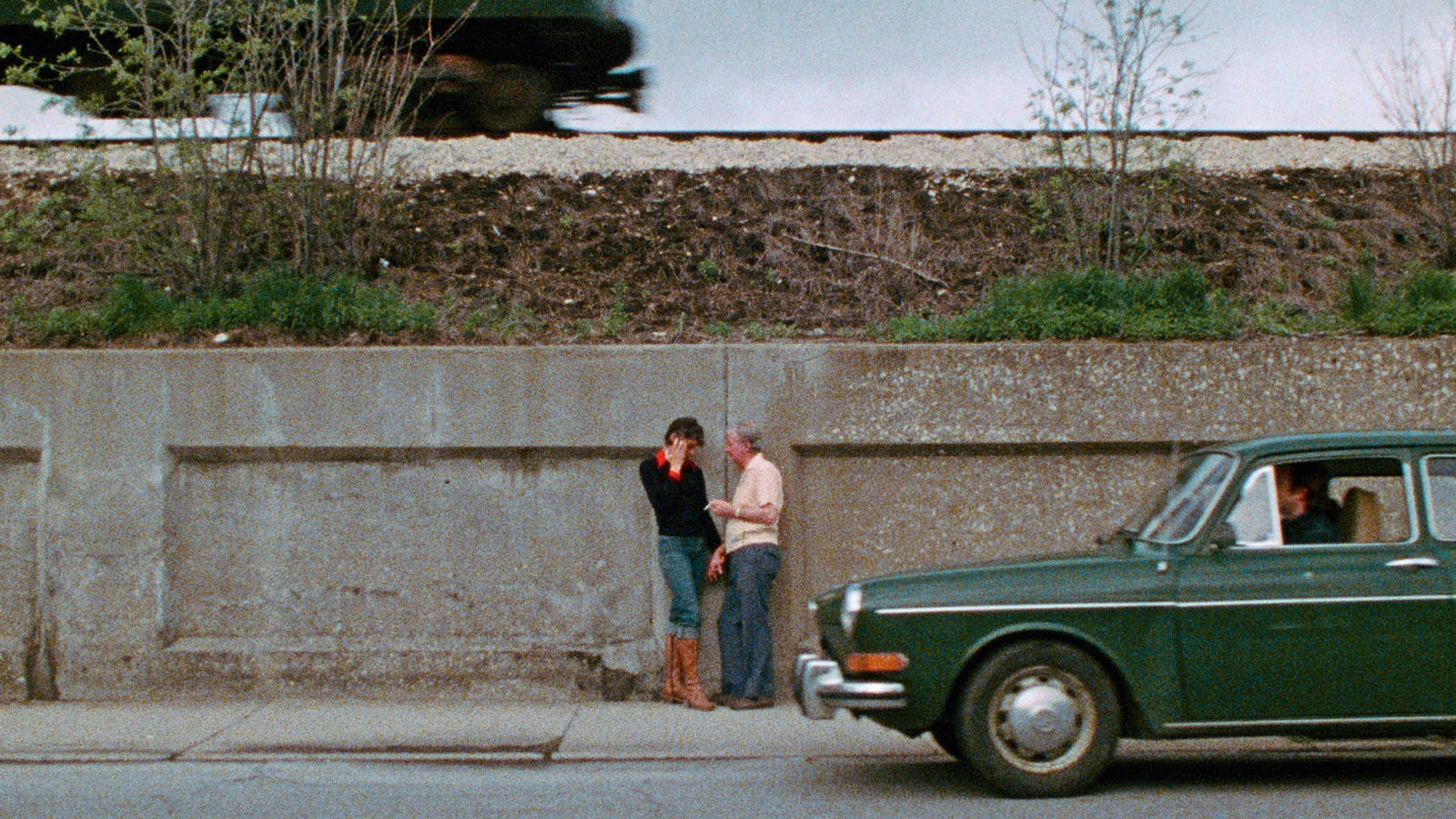
James Benning · 83m · 16mm
In his first feature-length film, Benning curates a narrative from otherwise passive images of Middle America: A lesbian couple travels the Midwest, a hitchhiker continues on, a man brushes with infidelity. Geometric compositions render every image a postcard of the in-betweens of American life. This poignant meditation on filmic evocation shows but never tells.
Sunday, April 28th 8:00PM
American Dreams (Lost and Found) (1984) / O Panama (1985)
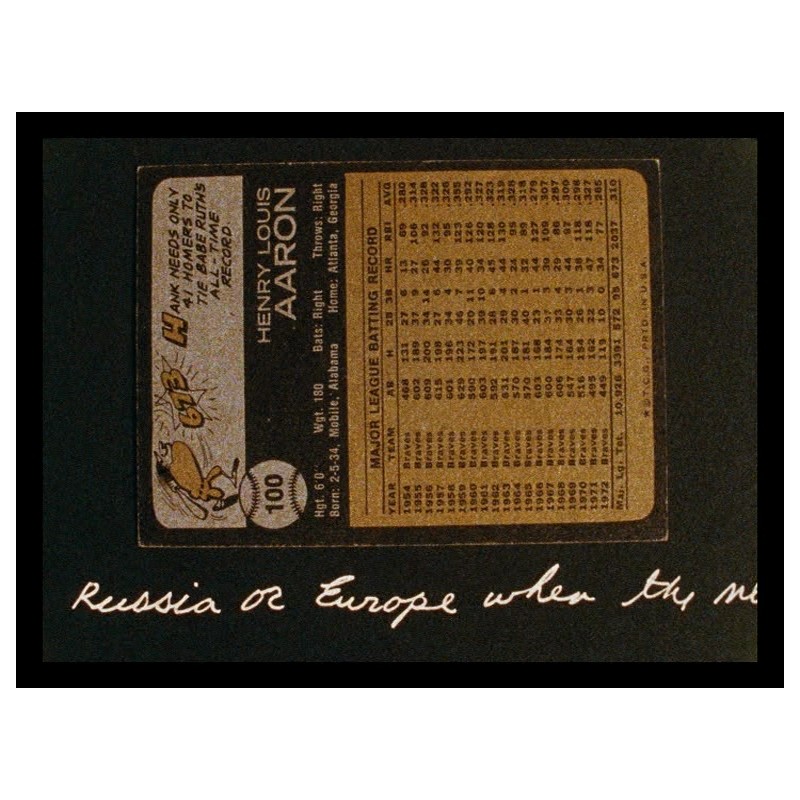
James Benning · 55m / 27m · 16mm
In American Dreams, Hank Aaron memorabilia circa 1954-76 form a backdrop for mania. The cursive text of a raving diary scrolls along the screen, with political speeches, pop songs, and interviews. O Panama, starring Willem Dafoe, studies a man confined to his apartment while suffering from an undisclosed illness. In the dead of winter, the outside world contrasts his hot flashes and hallucinatory dreams.
Sunday, May 5th 8:00PM
Four Corners (1997)
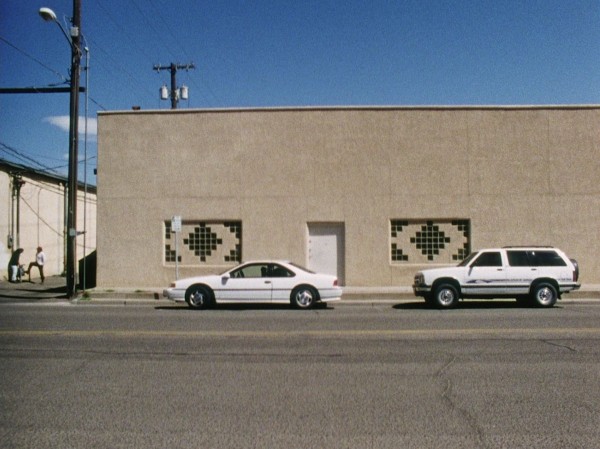
James Benning · 80m · 16mm
Four corners, four paintings, four accounts of marginalized, geographically-specific stories inform a concentrated account of America's past and present. The tourist destination of the Four Corners, where Utah, Colorado, Arizona, and New Mexico meet, is centered in a meditative and patterned experiment that challenges the established American narrative.
Sunday, May 12th 8:00PM
North on Evers (1991)
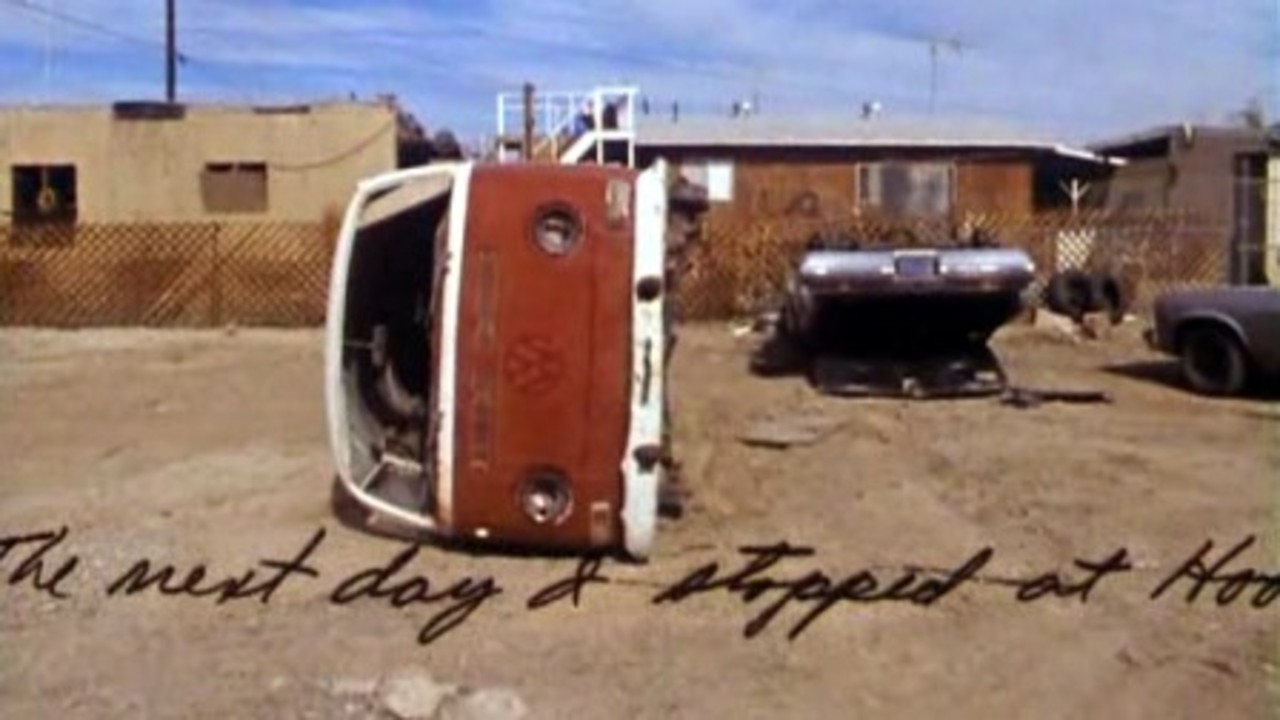
James Benning · 87m · 16mm
Spots of landscape, hastily-scrawled diary entries, and the distance of American history collide in Benning’s cyclical road trip around the United States. Cut with brief handheld shots of horses, fields, and the road, North of Evers narrates a weighted and hazy 90s, diegetic sound included. Cameos from Linklater, Dafoe, and other unnamed Benning personalities appear, too.






